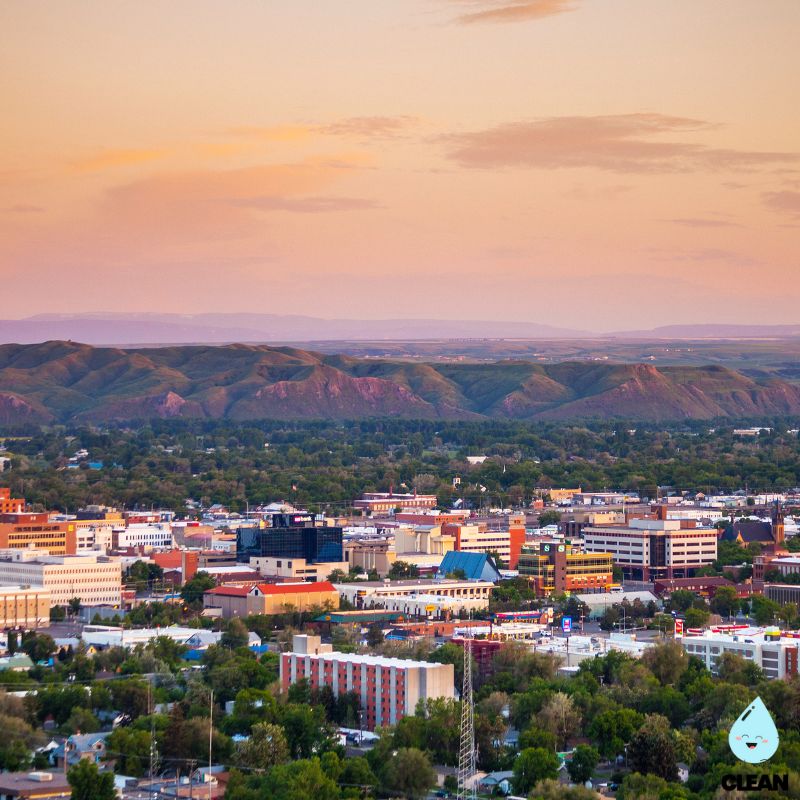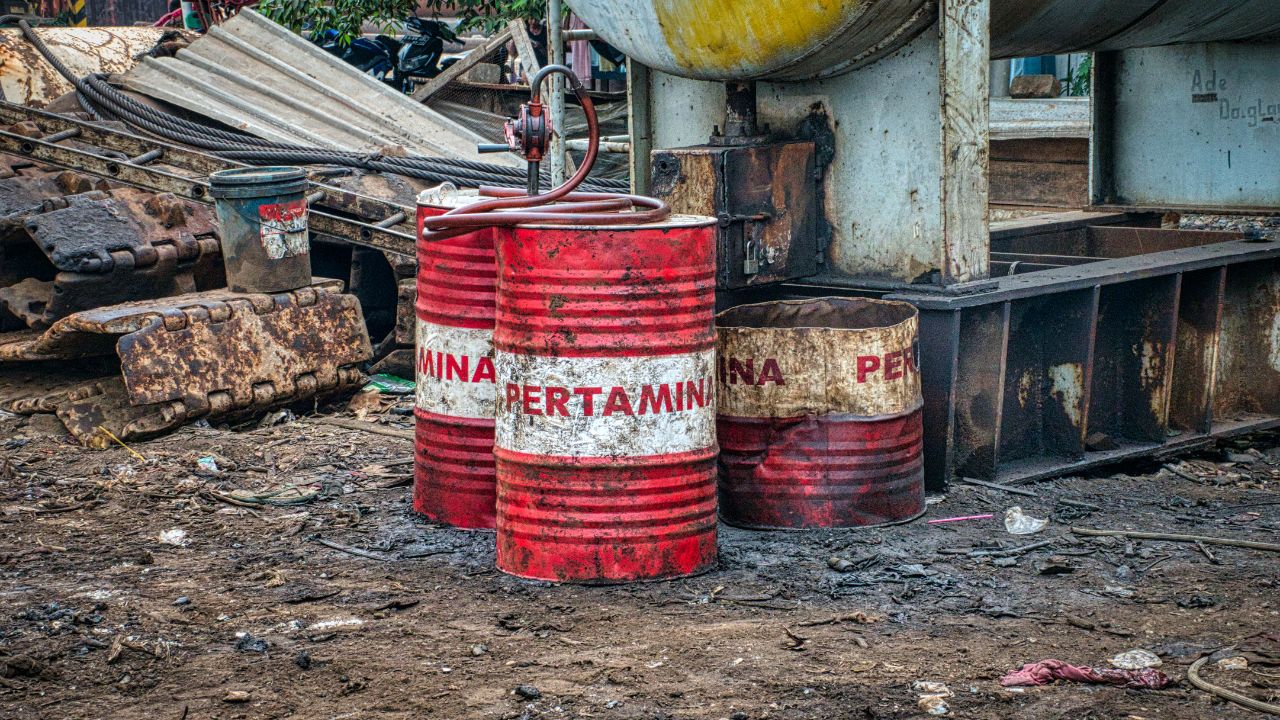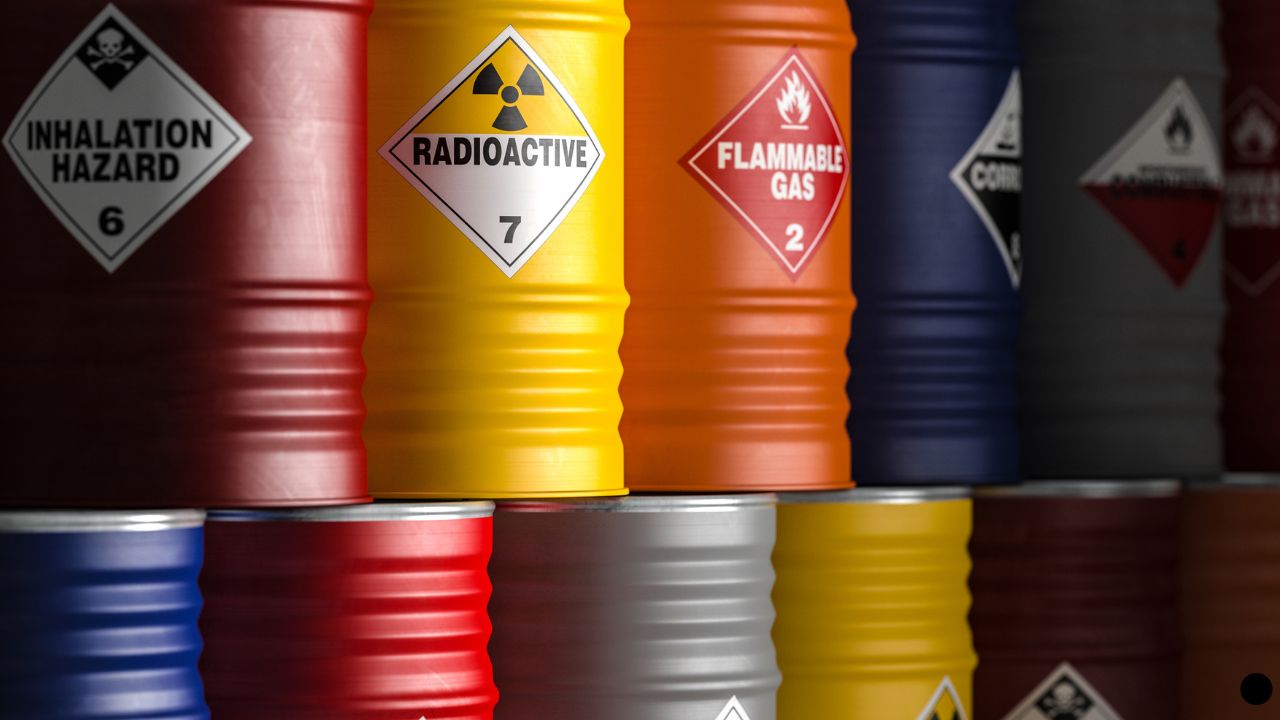Billings Water Quality at a Glance
major concerns
Is Billings Water Safe to Drink?
Generally Yes, With Major Cautions – While Billings water meets federal standards, it contains arsenic at 1,250 times above health guidelines and elevated levels of multiple cancer-causing disinfection byproducts. The Yellowstone River source is affected by upstream industrial discharge, including arsenic from the CHS refinery in Laurel.
⚠️ Key Concerns for Billings Residents
- Arsenic: Cancer-causing heavy metal at 5.00 ppb – 1,250x above health guidelines
- Chromium-6: Carcinogenic hexavalent chromium detected at 6.6x above health guidelines
- Disinfection Byproducts: Multiple cancer-causing compounds from chlorine treatment including chloroform (78x over guidelines)
- Source Contamination: Yellowstone River affected by industrial discharge from upstream refineries
Read the full report below for detailed analysis, contamination sources, and actionable recommendations for Billings residents.
Billings – Montana – Water Quality Report 2025: Arsenic Contamination, Disinfection Byproducts & Safety across your city
Billings Public Works provides comprehensive water services to approximately 110,000 residents in Montana’s largest city and surrounding areas, including portions of Yellowstone County. As a municipal utility serving the Magic City, the system operates approximately 800 miles of water distribution lines, multiple storage reservoirs, and advanced treatment facilities that deliver an average of 50 million gallons of drinking water daily to residents and businesses across the greater Billings metropolitan area.
Billings sources its drinking water exclusively from the Yellowstone River, the longest free-flowing river in the contiguous United States. The water is treated at the historic Belknap Water Treatment Plant, which has served the community since 1914 and undergone numerous modernizations to achieve a current capacity of 60 million gallons per day. While Billings’ water meets federal compliance standards, recent testing reveals significant concerns including arsenic levels 1,250 times above health guidelines and multiple cancer-causing disinfection byproducts. The Yellowstone River source is impacted by upstream industrial discharge, including arsenic from the CHS refinery in Laurel, creating ongoing water quality challenges that require enhanced treatment and monitoring.

Billings Water Quality: Current Status (2024-2025)
Latest Testing Results
- Water Quality Compliance: For April-June 2024, Billings water was in compliance with federal health-based drinking water standards, though legal limits for contaminants have not been updated in almost 20 years and do not reflect current health guidelines.
- Arsenic Contamination: Third-party testing found arsenic at 5.00 ppb – 1,250 times above EWG health guidelines (0.004 ppb), though still below the federal legal limit of 10 ppb set in the early 2000s.
- Disinfection Byproducts: Multiple cancer-causing compounds detected including chloroform (78x above health guidelines), bromochloroacetic acid (125x above guidelines), and total trihalomethanes (278x above guidelines).
Water Sources
- Yellowstone River: Billings’ sole water source, drawing from the 671-mile river that originates in Yellowstone National Park and flows through the city, but faces contamination from upstream industrial activities.
- Upstream Contamination: The CHS refinery in Laurel has been discharging arsenic into the Yellowstone River since 2015, with levels ranging from 6 to 80 micrograms per liter – well above water quality standards.
- Source Water Challenges: The river experiences extreme seasonal fluctuations, from historic flooding (87,000 cubic feet per second in 2022) to drought conditions, while also carrying industrial contaminants from upstream sources.
Treatment Technology
- Belknap Water Treatment Plant: The historic facility, established in 1914 and continuously upgraded, utilizes conventional treatment processes including coagulation, flocculation, sedimentation, filtration, and chlorine disinfection with a capacity of 60 million gallons per day.
- Treatment Limitations: Current treatment processes are effective for basic contaminants but do not adequately address arsenic or prevent formation of disinfection byproducts, which are created when chlorine reacts with organic matter in the source water.
- Monitoring and Testing: Regular testing is conducted to ensure compliance with federal standards, though testing results show numerous contaminants above modern health guidelines established by health authorities.
Infrastructure Modernization
- West End Water Treatment Plant: A $68 million project under construction to provide backup treatment capacity, enhanced emergency reserves (increasing from hours to weeks), and improved system resilience against supply disruptions.
- Lead Service Line Replacement: Active replacement of 320 service lines as part of compliance with updated EPA Lead and Copper Rule requirements, with completion of service line inventory by October 2024.
- Utility System Modernization: Recent implementation of new billing software (VertexOne) and enhanced meter reading technology, including Neptune 360 smart meters for improved water usage monitoring and system efficiency.
Contamination Sources and Challenges
Billings faces significant water quality challenges stemming from both natural and industrial sources. The primary concern is arsenic contamination, which occurs naturally in some areas but is significantly elevated due to upstream industrial discharge from the CHS refinery in Laurel. This facility has been releasing arsenic into the Yellowstone River since 2015, with levels averaging 34 micrograms per liter – well above state water quality standards. Additionally, the chlorine disinfection process creates cancer-causing byproducts when it reacts with organic matter in the river water, including chloroform, bromochloroacetic acid, and total trihalomethanes. The utility’s reliance on a single-source water system makes Billings particularly vulnerable to upstream contamination events and seasonal variations in source water quality.
Recommendations for Billings Residents

Install Water Filtration
Given the significant arsenic contamination and disinfection byproducts, consider installing NSF-certified reverse osmosis or activated carbon filtration systems. Reverse osmosis is most effective for arsenic removal, while carbon filters can reduce chlorine byproducts.

Request Water Testing Data
Contact Billings Public Works at 406-657-8345 to request the most recent Consumer Confidence Report and specific data about contaminant levels in your area. Ask about arsenic levels and disinfection byproduct concentrations.

Check Your Service Lines
Use Billings’ Water Service Line Material Viewer at billingsmtpublicworks.gov to identify your service line material by address. For homes built before 1986, consider additional testing given the current contamination concerns.

Advocate for Better Treatment
Contact city officials and attend public meetings to advocate for enhanced water treatment technologies that can better address arsenic and reduce disinfection byproduct formation. Support efforts to address upstream contamination sources.

Stay Informed About Contamination
Monitor news about the CHS refinery’s arsenic discharge compliance and any updates to water treatment improvements. Stay updated on health advisories and consider consulting healthcare providers about potential exposure concerns.
Frequently Asked Questions
Is Billings’ tap water safe to drink?
Billings’ tap water meets federal compliance standards but contains concerning levels of contaminants that exceed modern health guidelines. The water contains arsenic at 1,250 times above health guidelines and multiple cancer-causing disinfection byproducts.
While the city’s water treatment process addresses basic safety requirements, it does not effectively remove arsenic or prevent formation of disinfection byproducts. The legal limits for many contaminants have not been updated in almost 20 years and do not reflect current scientific understanding of health risks. Residents should consider additional filtration, especially for long-term consumption.
What is causing the arsenic contamination?
The primary source of arsenic contamination is the CHS refinery in Laurel, which has been discharging arsenic into the Yellowstone River since 2015:
• Industrial discharge: CHS has released 6-80 micrograms per liter of arsenic, averaging 34 micrograms per liter
• Regulatory delays: The refinery was given until 2022 to meet compliance standards but has continued to exceed limits
• Location impact: Billings draws water downstream from Laurel, where the contaminated discharge enters the river
• Natural occurrence: Some arsenic occurs naturally in Montana geology, but industrial discharge significantly elevates levels
The EPA has set a standard of 10 micrograms per liter for safe drinking water, but health experts recommend much lower levels for long-term consumption.
What are disinfection byproducts and why are they concerning?
Disinfection byproducts are chemicals formed when chlorine (used to kill bacteria) reacts with organic matter in the source water:
• Formation process: Chlorine reacts with naturally occurring organic compounds in the Yellowstone River
• Health concerns: Many are classified as probable carcinogens and may increase cancer risk with long-term exposure
• Common byproducts in Billings: Chloroform, bromochloroacetic acid, total trihalomethanes, and haloacetic acids
• Elevated levels: Several byproducts in Billings water exceed health guidelines by 78-849 times
These compounds are largely preventable through alternative disinfection methods or enhanced source water treatment, but current treatment processes continue to generate them at concerning levels.
What filtration systems work best for Billings water?
Given Billings’ specific contamination profile, different filtration technologies address different concerns:
For Arsenic Removal:
• Reverse osmosis systems (most effective)
• Ion exchange filters
• Look for NSF-53 certification for arsenic reduction
For Disinfection Byproducts:
• Activated carbon filters
• Reverse osmosis systems
• Look for NSF-53 certification for trihalomethane and haloacetic acid reduction
Best Overall Protection: Reverse osmosis systems that can address both arsenic and disinfection byproducts, though they require more maintenance and produce wastewater.
Quality News About Your Water
Get the comprehensive water quality news coverage you need with our dedicated US Water News Service. From coast to coast, we deliver in-depth reporting and expert analysis on PFAS contamination, EPA regulatory changes, infrastructure developments, and emerging water safety issues affecting communities nationwide. While mainstream media only covers the biggest stories, we provide the detailed, ongoing coverage that helps you understand the full scope of America’s water challenges. Whether you’re a concerned citizen, water professional, or community leader, our daily updates and analytical insights keep you informed about the issues that matter most to public health and environmental safety.
Contaminants of Concern

Arsenic Contamination
Source: Industrial discharge from CHS refinery in Laurel releasing 6-80 micrograms per liter into Yellowstone River upstream from Billings water intake, combined with naturally occurring arsenic in regional geology
Health Effects: Chronic arsenic exposure increases risk of skin, bladder, lung, kidney and prostate cancers. Even low-level exposure over time can cause health problems, particularly in children and vulnerable populations
Current Levels: 5.00 ppb detected in Billings water – 1,250 times above California health guidelines (0.004 ppb) though below federal legal limit of 10 ppb Filtration Needed: Reverse osmosis or ion exchange systems certified for arsenic reduction

Disinfection Byproducts
Source: Formation when chlorine disinfectant reacts with organic matter in Yellowstone River water during treatment process, creating cancer-causing compounds as an unintended consequence of water disinfection
Health Effects: Probable carcinogens that increase cancer risk with long-term exposure, may cause reproductive and developmental problems, linked to bladder, colon, and rectal cancers in epidemiological studies
Current Levels: Chloroform (78x above guidelines), total trihalomethanes (278x above guidelines), haloacetic acids (333-849x above guidelines) Filtration Options: Activated carbon and reverse osmosis systems certified for trihalomethane and haloacetic acid reduction

Chromium-6 (Hexavalent Chromium)
Source: Industrial pollution and natural occurrences in mineral deposits and groundwater, the same carcinogenic compound featured in the movie “Erin Brockovich” that contaminated Hinkley, California
Health Effects: Classified as a human carcinogen by multiple health agencies, 2008 National Toxicology Program study found chromium-6 in drinking water caused cancer in laboratory animals
Current Levels: 0.131 ppb detected – 6.6 times above California health guidelines (0.02 ppb) established to protect against cancer Treatment Options: Reverse osmosis and ion exchange filtration systems

PFAS Status Update
Current Status: EPA testing of Billings water system found no detections of PFAS compounds above laboratory reporting limits during 2013-2015 testing period, making Billings one of the Montana cities without detected PFAS contamination
Statewide Context: Only Kalispell and Hamilton in Montana have detected PFAS in public water supplies, with Kalispell recording some of the highest levels in the region at contaminated wells
Ongoing Monitoring: Additional PFAS testing under EPA’s UCMR5 rule continues statewide, with new federal drinking water standards for six PFAS compounds taking effect in 2024 Future Concerns: Montana DEQ reviewing adoption of new EPA PFAS standards
Please read – our information
The information presented on cleanairandwater.net is compiled from official water quality reports, trusted news sources, government websites, and public health resources. While we strive for accuracy and thoroughness in our presentations, we are not scientists, engineers, or qualified water quality professionals.
Our mission is to present water quality information in an accessible, real-world format that helps people understand what’s in their water and make informed decisions about their health and safety. We believe that complex environmental information should be available to everyone in a format that’s easy to understand.
We make every effort to ensure our content is current and accurate, but we cannot guarantee that all information is complete or error-free. This website should not replace official communications from your local water utility or health department. We always recommend consulting official sources for the most up-to-date information regarding your specific water system.
Clean Air and Water is not liable for any unintentional errors, omissions, or outdated information. The content on this site is provided for informational purposes only and should not be considered professional advice.


